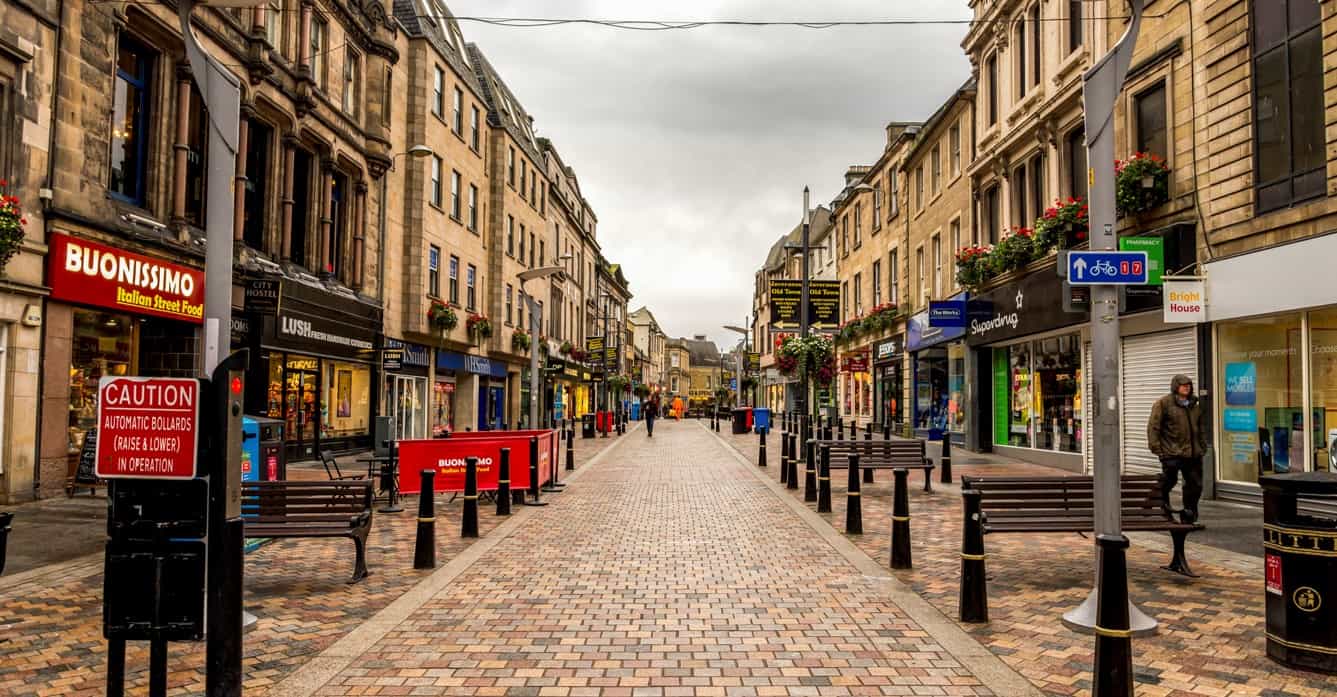The high street is the moniker used within the United Kingdom (UK) to describe the influential, business-centric focal point of any town in the UK’s constituent countries. In years past, it was a vibrant place for inhabitants to shop, discourse and commune. Today, the UK’s high street is saturated with retail shops and restaurants, but it tells a much different story than bygone days. It tells a ghost story.
In 2018, retail jobs disappeared in the UK at an alarming rate, third in line to the financial crisis of 2008.1 Experts now predict upwards of 100,000 shop closings by the end of the decade as their physical spaces are left empty in shadows. Stubbornly static business rates, changing consumer purchasing trends and increasing online competition are only a few of the reasons that the high street’s brick-and-mortar stores are closing in bulk.2, 3, 4
At Logile, we ponder whether this ghost story is a UK-based phenomenon, or if it reverberates throughout the global economy. In our experience, many brick-and-mortar retailers across the world wonder whether they can keep up with their online competition. If so, how? Are physical locations an antagonist in this story, holding back businesses from achieving financial splendor in today’s online-driven economy? These are questions that many American retailers are contemplating alongside their global counterparts. With Amazon and other online-only businesses disrupting commerce over and over again, a shift in the industry narrative is not waiting for future chapters; it has already arrived.
In this first post of a three-part series (see part 2 and part 3), we see rays of hope in this grim story for organizations willing to adapt. Take Starbucks. The billion-dollar company was still growing in sales in 2018 and pushing into newer markets without haste. Even after a cultural snafu in Philadelphia years ago, Starbucks rehabilitated its public image and pressed onward. The reason Starbucks gives other retailers hope is because its physical presence increases with its sales every year. Why? Inclusion, ambiance and convenience are among the main reasons.5 Starbucks creates a fantastic physical experience for its consumers. This same story is not only possible for grocery and specialty retailers, but it may also be necessary. Jose Neves,6 CEO of online fashion retailer Farfetch and London boutique Browns, noted the following:
When it comes to the future of retail, I’m convinced that [brick-and-mortar] stores will be the center of the stage. What is going to change drastically is the way these physical stores operate and service their customers; it’s about a seamless merge of fantastic physical experience with powerful, yet subtle technology.
Let us utilize today’s blog post to analyze this influential thought from Neves. Using its components, we might gather the following:
- Brick-and-mortar stores are not exiting the retail narrative but must transform.
- In-store operations and customer service are necessary to deliver an optimal experience.
- Powerful, yet subtle technology will predicate this transformation.
First, brick-and-mortar stores have weathered disruption like this before.4 Healthy, bustling retailers that have a physical presence use multiple distribution channels exceptionally. In other words, they are ahead of the curve in organic digital transformation.4 Consumers expect this; they want to find their products at a store or online, and they want those products customizable to their specifications and preferences. This will be the retail landscape of Generation Z and beyond, which will be full of shoppers accustomed and attached to their devices. Additionally, “physical stores will always be best for instant gratification,”6 as Senior Retail Analyst Toby Pickard commented. Shoppers will enjoy the convenience of online shopping while fully immersing themselves into the physical buying experience.
This does not mean retail locations will look like they always have in chapters past. For instance, some retailers are planting themselves within social enterprises like coworking spaces.6 Back in 2013, retail veteran Bill Grimsey produced a special report on how to revitalize the UK’s high street. Within the report, he encouraged specific and pragmatic government interventions to turn town centers (i.e., high street properties) into housing, health, leisure, cultural and educational hubs. In doing so, retail businesses might fold into those enterprises. Indirectly, the high street could see community regeneration through social experience, thus transforming brick-and-mortar retailers.
That in mind, let’s discuss the underlying factors to providing a fantastic physical experience as outlined by Neves. To use a simple analogy, if the experience is the climax of a retail shopper’s narrative, in-store planning and customer service are the essential storytelling components. The idea of a seamless or frictionless6 shopping journey provides a consumer with the perfect combination of information and choice without making him feel overwhelmed. To find this sweet spot, retailers will need to have operational excellence. In-store planning is the logical, structured part of the shopper’s story, while customer service is the captivating part. A retailer’s labor model, forecasting solution, scheduling capabilities, task management platform and more will play major roles in how the plotline comes together for the consumer.
Stepping out of our analogy, we can discuss the final component of Neves’ comment. For retailers on the high street or abroad, the key to organic digital transformation will be to invest in technology “the right way to get ahead of digital trends,” according to Accenture Strategy’s Managing Director Richard Wolff.4 What does that mean? Some companies are quickly acquiring digital competitors, while others are investing in end-user technology. We believe that powerful, yet subtle technology refers to solutions that put the right products in front of the right consumer at the right time with the right service level. The high street and global retailers might consider technology that helps them do what they do best at an optimal level.
In conclusion, the high street may be seeing the final days in this chapter of its story. Physical stores are closing, leaving buildings vacant and retailers frustrated. This is not that different than retailers around the world. However, brick-and-mortar shops are not doomed. In fact, this shift will provide fertile space for retailers willing to invest in fantastic physical experiences through in-store planning, customer service and powerfully subtle technology. Using these elements, many existing retailers could find themselves in the next episode of this once-ghostly story.
References
- Wood, Z. (2018, July 4). High streets must stop relying on retail, says expert review [Blog post]. TheGuardian.com. Retrieved from https://www.theguardian.com/business/2018/jul/04/high-streets-must-stop-relying-on-retail-says-expert-review
- Monaghan, A. (2018, May 10). MPs launch inquiry into high streets facing threats from online [Blog post]. TheGuardian.com. Retrieved from https://www.theguardian.com/business/2018/may/10/mps-to-investigate-ways-of-reviving-online-hit-high-streets-inquiry-shopping
- Wood, Z. (2017, Nov 18). As Amazon opens a guerilla store, has the internet beaten the high street? TheGuardian.com. Retrieved from https://www.theguardian.com/technology/2017/nov/19/amazon-high-street-shop-london
- Adams, R. (Ed.) & Waugh, R. (Pr.). (2018). The future of retail [eBook]. Telegraph.co. Retrieved from https://www.telegraph.co.uk/business/tips-for-the-future/future-of-retail/
- Hennessey, R. (2012, Aug 6). 3 reasons why Starbucks still shines, despite market shortcomings [Blog post]. Forbes.com. Retrieved from https://www.forbes.com/sites/rachelhennessey/2012/08/06/3-reasons-why-starbucks-still-shines-despite-market-shortcomings/
- Bearne, S. (2017, Jan 25). What does the store of the future look like? [Blog post]. TheGuardian.com. Retrieved from https://www.theguardian.com/media-network/2017/jan/25/what-store-future-look-like-retail-technology




